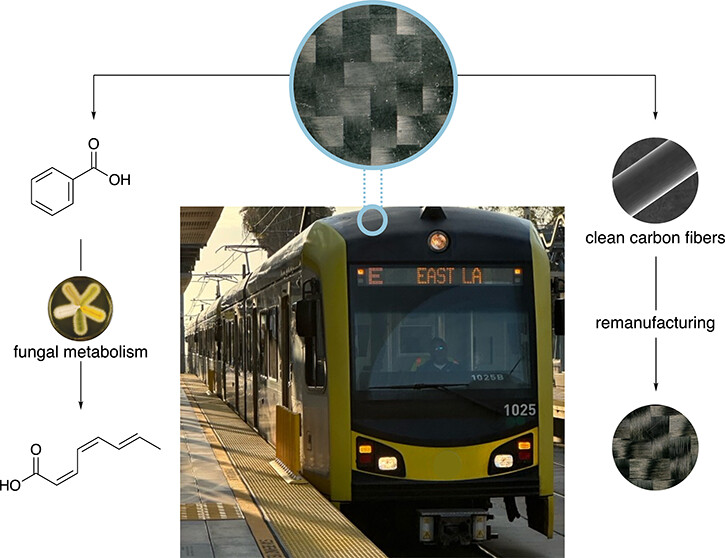We reach more than 65,000 registered users in Dec!! Register Now

Research shows feasting fungi could revolutionize carbon-fiber recycling
- August 26, 2025
- 9 Views
- 0 Likes
- 0 Comment
Today, carbon-fiber materials are nearly ubiquitous in the industrialized world, found in everything from hockey sticks to passenger airliners. With hundreds of thousands of tons of carbon fiber produced around the world every year, scientists have sought useful, cost-effective methods for recycling the material. But carbon fiber — strands of carbon atoms bonded together in a matrix — is particularly tough to recycle into new useful materials.
It’s usually a woven material combined with a matrix, often made of epoxy or polystyrene, that holds it together,” said Berl Oakley, Irving S. Johnson Distinguished Professor of Molecular Biology at the University of Kansas. “You have a mixture of the fabric and the matrix, so the goal is to recover the fabric for reuse and also dissolve the matrix without creating something toxic or wasteful. Ideally, you want to reclaim value from it.”
Now, in a new biotechnological process just detailed in the Journal of the American Chemical Society, Oakley at KU and collaborators at the University of Southern California have developed a chemical procedure for breaking down and removing the matrix from carbon fiber reinforced polymers (CFRPs) such that recovered carbon fiber plies exhibit mechanical properties comparable to those of virgin manufacturing substrates.
One of the major matrix breakdown products is benzoic acid, and to recover additional value, Oakley has developed a genetically modified version of the fungus Aspergillus nidulans that can feast on benzoic acid to produce a valuable chemical compound called OTA (2Z,4Z,6E)-octa-2,4,6-trienoic acid). According to Oakley and his collaborators on the new paper, "This represents the first system to reclaim a high value from both the fiber fabric and polymer matrix of a CFRP."
“OTA can be used to make products with potential medical applications, like antibiotics or anti-inflammatory drugs,” Wang said in a statement issued by USC. “This discovery is important because it shows a new, more efficient way to turn what was previously considered waste material into something valuable that could be used in medicine.”
Next, Oakley said his KU lab will try to make their specialized fungus even more efficient, keeping in mind needs for scalability and profitability if the new carbon-fiber recycling method is to be applied at the industrial scale.
“Since this work began, we’ve developed strains that are actually better than the original ones,” he said. “These newer strains will likely give better results, but we’ll need to do lots of work to engineer this process into the improved strains.”
List of Referenes
- Clarissa Olivar, Zehan Yu, Ben Miller, Maria Tangalos, Cory B. Jenkinson, Steven R. Nutt, Berl R. Oakley, Clay C. C. Wang, Travis J. Williams. Composite Recycling with Biocatalytic Thermoset Reforming. Journal of the American Chemical Society, 2024; 146 (44): 30004 DOI: 10.1021/jacs.4c10838
Cite This Article as
No tags found for this post









